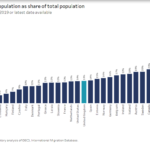The housing market in U.S. and Canada have taken different paths since the credit crisis began. In the U.S. it continues to get worse since the crash that started last year. In 2008, more than 3 millions foreclosures were filed setting a record. Foreclosures in 2008 was up 71% from 2007. This year foreclosures have been in excess of 250K each month reaching 342K in April but backing down to 321K in May according to Realtytrac. A recent New York Times editorial mentioned that rising unemployment numbers and falling home prices are causing new foreclosures with no end in sight.
Unlike the U.S. housing market crash, home foreclosures have not yet become a serious problem in Canada. Other than losses sustained due to their sub-prime exposure in the U.S., the five major Canadian banks – Bank of Montreal (BMO), Bank of Novo Scotia (BNS), Toronto-Dominion Bank (TD), Canadian Imperial Bank of Commerce (CM) and Royal Bank of Canada (RY) are staying strong and their earnings have not take a huge hit due to mortgage defaults. This is not the case with American banks such as Bank of America (BAC), Citibank (C), US Bank (USB), Wells Fargo (WFC) and many others who have been forced to seek government aid to prevent complete meltdown.
This brings us to the following questions: What are the primary causes of the housing market collapse in the U.S?. Why is the housing mortgage market so strong in Canada? What are the real differences between the Canadian and American mortgage systems? Why didn’t Canadian banks suffer huge losses due to mortgage loan losses?
Some of the answers to the above questions can be found in the following table which lists the differences between the housing markets in Canada and US.
[TABLE=169]
Source: Canadian Residential Mortgage Markets: Boring But Effective?, By John Kiff, June 2009, IMF Working Paper
In summary, in Canada lending standards are much more strict and banks are not as innovative and aggressive as their peers south of the border but perform their main function as deposit takers and housing loan providers. American banks on the other hand have deviated from their primary functions over the years in order to generate higher above-average returns year after year. Relaxation of regulations by the government and creating favorable environment promoting home ownership by all added fuel to the fire.



